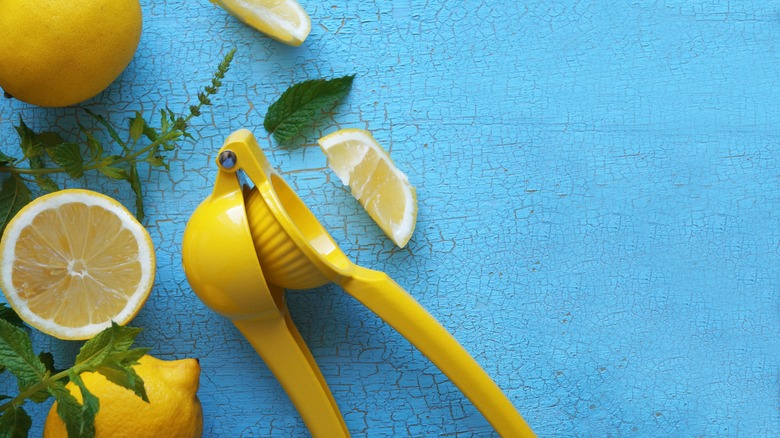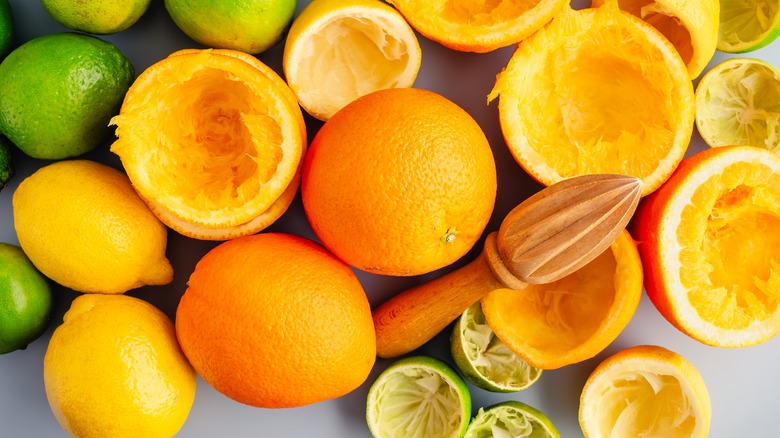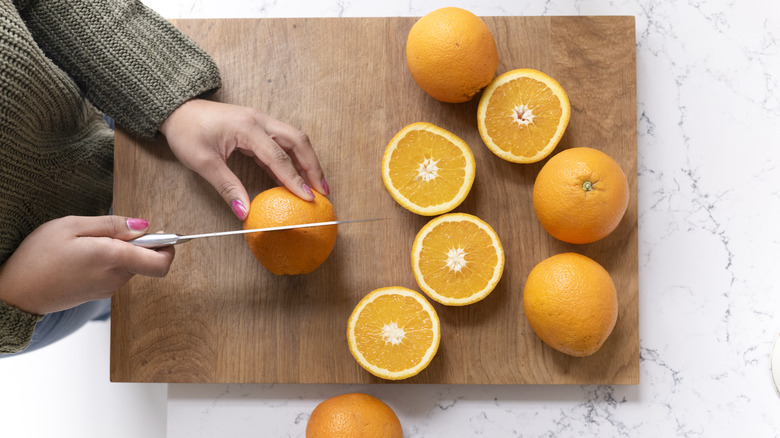Are You Using Your Citrus Reamer Wrong?
There's a question dividing households and causing ongoing fights between partners. No, this debate has nothing to do with politics or career choices. This is a quandary that pops up each time you take out your citrus squeezer, juicer, or reamer: What's the right way to use this gadget? It's about time you had a definitive explanation to share with your loved ones.
The answer is to place halved citrus cut-side down into the curved plastic. That's right, though it looks awkward, this is the correct placement. It's tempting to assume the rounded outside of a lemon or lime should sit neatly cradled against the curved hollow of the plastic, but that would be wrong.
@carlaphall Debate=settled! A chef tip you didn't know you needed! The more you know 😉 #kitchenhacks
The consequence of using your reamer incorrectly, as evidenced in a helpful TikTok from Chef Carla Hall, is that you'll extract significantly less juice. Hall's output when reaming correctly was double that of an incorrectly squeezed fruit. To help the liquid flow out, you can take the technique a step further and slice off the rind at either end of your citrus before fitting it into the squeezer. Make a quick slice or slash across the cut-side of lemons and limes, as well, to encourage even more juice to flow.
How and when to use different reamers
Hand-held reamers are easy to use and can make quick work of lemons and limes, as well as smaller oranges and tangerines. Plus, the squeezable tool extracts the juice, not the pulp or seeds, so you won't have to dirty a strainer to filter out lumps and chunks. Definitely tap this device to help with a zesty lime marinade or a pasta al limone.
However, they're less helpful when powering through a high volume of fruit for lemonade or a pitcher of drinks — in that case, you might wish for an electric press or countertop manual juice press (the standing contraptions with a lever at the top). If you spring for the pricier machines, keep in mind that you'll need to handle citrus differently. Place lemons, limes, and even tomatoes cut-side down to compress the fruit.
The same is true for retro reamers with saucers, and wooden reamers that have a pointy end and grooved sides. For those, follow your instincts and place fruit cut-side down before pressing and twisting, being careful not to poke the sharp end through the rind and into your hand as you do. These manual reamers are messier, but they more effectively break down the flesh and squeeze out every bit of juice from citrus and even kiwis. If you're short on ingredients, use this reamer and follow tips to get the maximum juice from your lemon.
Creative ways to get fruit juices flowing
If you now feel confident handling a citrus reamer but don't have any other tools, there are a few options already lurking in your kitchen that can help you tackle oversized and undersized fruits. Start by considering larger produce that exceeds the width of the squeezer, like grapefruits. Although you can try quartering larger specimens, like oranges or even pomegranates, before wedging them into the squeezer, you may find this makes a mess.
Instead, when whipping up a paloma cocktail or juicing tangelos, start by squeezing halved fruit by hand over a strainer. Then, press a small ramekin against the flesh to expel any remaining juice. A measuring cup or small dish may also do the trick. If this hack proves too challenging, you can also toss the whole mess, rinds and all, in your stand mixer and allow the paddles to do the heavy squeezing. Let the machine run for a few minutes, then strain out the juice.
As for very small wedges of citrus, like the limes set to garnish your tacos or the finishing hit of acid for homemade beans, you can also break out your garlic press and squeeze the segments as you would a clove. This is a helpful idea for people who already stuck their plastic squeezer in the dishwasher. And for tiny pomegranate seeds, fill a resealable bag with the cleaned arils, then go over them with a rolling pin to expel the juice.



